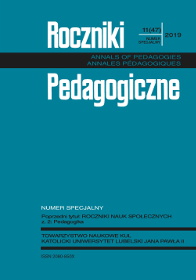Pogranicze polsko-rosyjskie jako bezpieczna przestrzeń życia człowieka
Polish-Russian borderland as a safe space of human life
Author(s): Dariusz JurczakSubject(s): Social Sciences, Education, Sociology, Inclusive Education / Inclusion
Published by: Towarzystwo Naukowe KUL & Katolicki Uniwersytet Lubelski Jana Pawła II
Keywords: borderland; Polish-Russian borderland; safe space; space of human life
Summary/Abstract: The article is an attempt to portray safe space of human life in the Polish-Russian borderland. The author of the study by the research wants to get attention to conditioning which rules life of ihabitants of the Polish-Russian borderland. Among many splits of barriers made from the point of view of their functions, the ones that count the aspect of social-economic development are worthy of particular noticing. It is possible to distinguish barriers of natural type and group of barriers typifying the structure of given territory (Polish-Russian borderland) that is demographic, cultural, economic, organizational and structural. In the local social safety (borderland safety) civil service (government and self-government) acts dominant role. It results from tasks of government and functions of public entities which do not compete with themselves economically and aren’t oriented on profit. Crucial meaning for development of local social safety in Poland were changes in system of public administration, especially creation of municipal government. The model of system includes internal sphere of state functioning. It allows determining how the system of security and its individual elements function. It also enables to project system of social safety management, coordinate executive elements of safety system, characterize environment influence on the system, point legal regulation that determine system organization and functioning; system influence on threats.
Journal: Roczniki Pedagogiczne
- Issue Year: 11/2019
- Issue No: S
- Page Range: 205-228
- Page Count: 24
- Language: Polish

